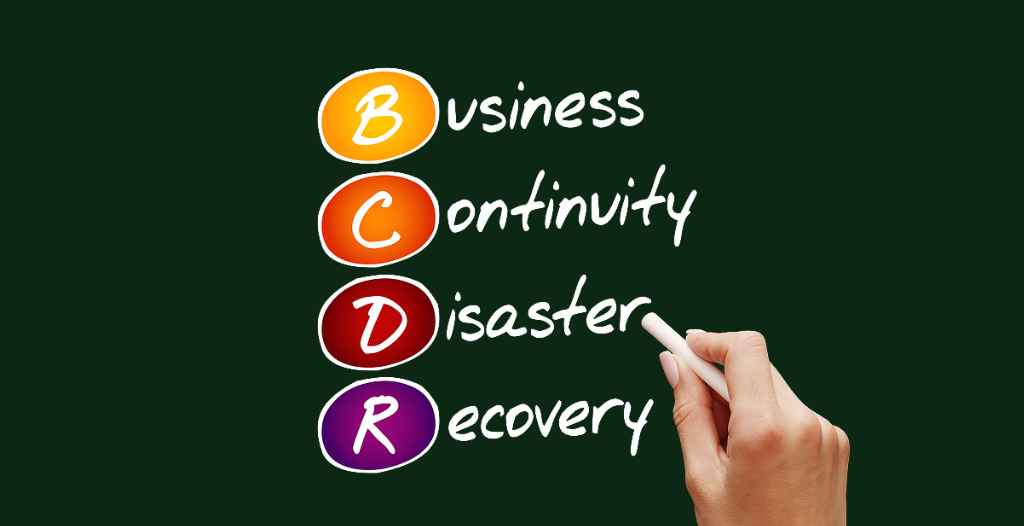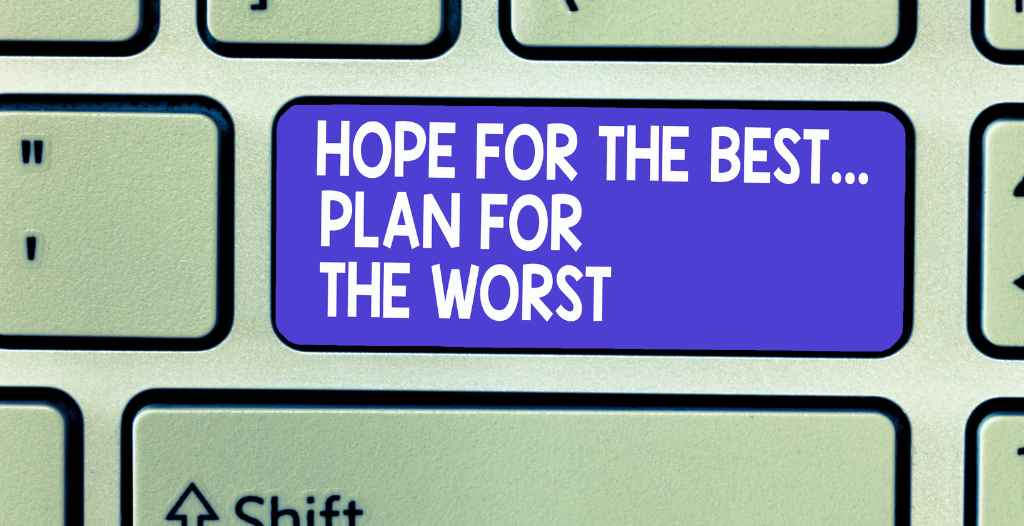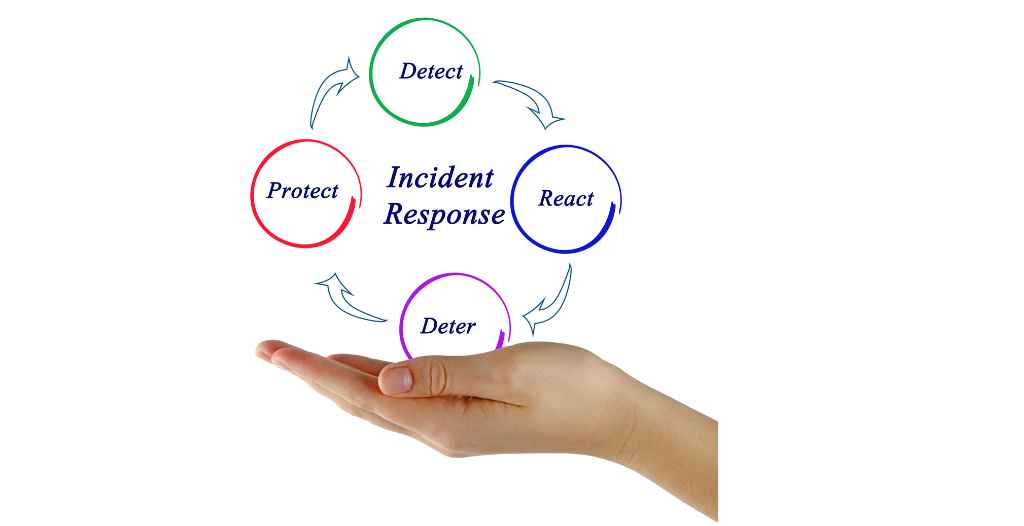Introduction

When the unexpected happens, will your business survive? Business Continuity (BC) and Disaster Recovery (DR) contain crucial survival techniques, essential disciplines for any organization that wants to minimize downtime, protect data, maintain customer trust, ensure financial stability, comply with regulations, and maintain a competitive advantage. This article explores the intricacies of business continuity vs disaster recovery, unpacking their differences, synergies, and the criticality of both in safeguarding an organization’s future.
Table of Contents
ToggleBusiness continuity planning and disaster recovery planning are essential components of any organization’s resilience strategy, enabling it to quickly resume operations after disruptions and safeguarding its operational, financial, and reputational health.
Business continuity focuses on maintaining essential functions during and after a disruption, while disaster recovery focuses on quickly restoring IT systems and data.
Whether you’re a seasoned IT professional or a newcomer to the world of organizational risk management, understanding the detail and the interplay between BC and DR is crucial for crafting strategies that stand the test of time and disaster.
Understanding Business Continuity

At its core, business continuity is about ensuring an organization’s critical operations can continue during and after a significant disruption. The disruption could be caused by a natural disaster, IT failure, staff issues, cyber-attacks, in fact, just about anything.
Business continuity planning is a holistic approach that encompasses not just IT systems, but all critical business functions and processes.
Business Continuity Planning (BCP) involves:
conducting a Business Impact Analysis (BIA) to identify critical functions
assessing risks
developing mitigation strategies
creating and implementing a continuity plan
training employees
testing the plan through exercises
regularly updating the plan to reflect changes
establishing clear communication protocols.
These steps ensure an organization can maintain or quickly resume critical operations during and after disruptions, minimizing operational, financial, and reputational impacts.
Understanding Disaster Recovery

Disaster recovery, on the other hand, is more narrowly focused. It’s primarily concerned with the restoration of IT infrastructure and systems following a disruption.
This includes data recovery, restoring IT operations, and ensuring that technology infrastructure is available to support essential business functions.
Disaster recovery planning
Disaster recovery planning (DRP) is critical in the digital age, where data loss or system downtime can have catastrophic implications for businesses.
DRP involves a series of activities designed to prepare an organization for the quick recovery of its IT systems, data, and operations after a disaster. That can include a natural disaster as well as an IT failure.
The activities in strategies for disaster recovery include:
Risk Assessment: Identifying potential threats and vulnerabilities that could impact IT systems and operations.
Business Impact Analysis (BIA): Evaluating the potential effects of disruptions on business operations to prioritize recovery efforts.
Strategy Development: Formulating strategies to recover IT systems, applications, and data. This includes deciding on in-house recovery, cloud-based solutions, or contracting with third-party disaster recovery services.
Plan Development: Writing the disaster recovery plan, which outlines the steps to be taken before, during, and after a disaster to restore operations. This includes recovery procedures, roles and responsibilities, and communication plans.
Implementation: Setting up the disaster recovery solutions, such as backup systems, replication, and failover mechanisms, as outlined in the DRP.
Testing and Drills: Regularly testing the plan to ensure it works as expected and conducting drills to prepare the recovery team for actual disaster scenarios.
Plan Maintenance: Keeping the DRP up to date with changes in the business environment, IT infrastructure, and emerging threats. This involves regular reviews and updates to the plan.
Training and Awareness: Educating staff and the disaster recovery team on their roles in the plan and raising awareness about disaster recovery procedures and expectations.
Disaster recovery plan
A robust disaster recovery plan outlines specific actions to be taken in the event of a disaster, detailing recovery point objectives (RPOs) and recovery time objectives (RTOs) to minimize data loss and operational downtime. It’s not just about having backups; it’s about having a tested, reliable plan for restoring systems and data to normal operations as quickly as possible.

Business Continuity vs Disaster Recovery
Business continuity and disaster recovery are two sides of the resilience coin, each playing a vital role in an organization’s preparedness and response strategy. While they share the common goal of safeguarding an organization against disruptions, their scopes, objectives, and planning methodologies differ significantly.
Having a clear understanding of these distinctions can empower organizations to develop more effective and comprehensive resilience strategies.
| Aspect | Business Continuity (BC) | Disaster Recovery (DR) |
| Scope and Focus | Encompasses the entire organization, aiming to keep all critical functions operational, including customer service, supply chain management, etc. | Hones in on the technology infrastructure, focusing on the rapid recovery of IT systems and data. |
| Objectives | Aims to minimize disruption and maintain essential services, ensuring the organization continues to operate smoothly during and after a disruption. | Focuses on swiftly restoring IT operations to their pre-disaster state to minimize downtime and data loss. |
| Planning and Preparation | Business continuity plans are comprehensive, addressing a wide range of considerations from employee safety to vendor relations and beyond. | Disaster recovery plans are more technical, detailing specific steps for data backup, system restoration, and ensuring the availability of critical IT resources. |
This comparative analysis underscores the complementary yet distinct roles of business continuity and disaster recovery within an organization’s overall resilience framework.
By integrating both BC and DR into their resilience planning, organizations can ensure a more holistic approach to preparedness and recovery, covering both the operational and technological aspects essential for sustained operations amidst challenges.
Exploring the Shared Elements of Business Continuity and Disaster Recovery
Business continuity and disaster recovery, though distinct in their focus and objectives, intersect in several crucial aspects.
These shared characteristics underscore the importance of a unified approach to planning and implementation, enhancing an organization’s capability to withstand and recover from disruptions.
Recognizing these similarities is vital for developing integrated strategies that leverage the strengths of both disciplines.
| Aspect | Business Continuity (BC) & Disaster Recovery (DR) |
| Goal Orientation | Both aim to protect the organization from disruptions. While BC focuses on maintaining operations, DR concentrates on rapid system and data restoration, both contributing to organizational resilience. |
| Risk Management | BC and DR are integral to the organization’s risk management efforts, identifying potential threats and implementing proactive measures to mitigate these risks. |
| Planning Process | The planning process for both BC and DR involves detailed risk assessments, business impact analyses, and the development of strategies to ensure readiness and rapid response. |
| Testing and Review | Regular testing and review are crucial for both BC and DR plans to ensure their effectiveness and to adapt to new threats or changes in the business environment. |
| Stakeholder Involvement | Effective BC and DR strategies require the involvement of various stakeholders, including employees, management, and external partners, to ensure comprehensive coverage and awareness. |
By aligning BC and DR efforts, organizations can create a more resilient and responsive framework capable of addressing a broad spectrum of risks and disruptions.
This integrated approach not only enhances the effectiveness of individual plans but also reinforces the organization’s overall resilience strategy.
Integration and Interdependence
The interplay between business continuity and disaster recovery is a testament to their integration and interdependence. An effective business continuity plan incorporates disaster recovery as a critical component, acknowledging that IT systems are the backbone of modern business operations. This holistic approach, often referred to as Business Continuity and Disaster Recovery (BCDR), ensures that organizations are prepared for a wide range of disruptions, from natural disasters to cyber-attacks.
Collaboration across departments is essential in BCDR, as it ensures that all aspects of the organization are aligned and prepared for action when disaster strikes. This synergy not only enhances the organization’s ability to respond effectively but also significantly reduces recovery times, minimizing operational downtime and financial impact.
Integration with Incident Response Plans: Enhancing Organizational Preparedness

Integrating Business Continuity and Disaster Recovery plans with Incident Response (IR) strategies is essential for a complete approach to organizational preparedness, especially in managing cybersecurity incidents. This integration ensures that organizations can not only respond to incidents as they happen but also maintain critical operations during and recover swiftly after an incident. Here’s how these plans come together:
Understanding the Components
Incident Response Plans focus on identifying, managing, and mitigating cybersecurity incidents as quickly as possible. They are the immediate action plans that detail steps for addressing a security breach or attack.
Disaster Recovery Plans are specialized components of the broader BC plans, specifically designed to restore IT infrastructure and critical data after a disruption, which includes cyberattacks among other disasters.
Business Continuity Plans aim to ensure that essential business functions continue during a disaster or emergency, including non-IT aspects such as personnel, physical locations, and third-party services.
Points of Intersection
Preparation and Prevention: Both IR and BC/DR plans emphasize the importance of preparation. By conducting risk assessments and business impact analyses, organizations can identify potential vulnerabilities and implement preventative measures.
Identification and Analysis: In the event of a cybersecurity incident, the IR plan kicks in to identify and analyze the breach. This step is crucial for determining the extent of the incident and understanding which aspects of the BC and DR plans need to be activated to ensure continuity and recovery.
Containment and Mitigation: While the IR plan focuses on containing the cybersecurity incident, DR strategies can be activated simultaneously to mitigate data loss and system downtime, ensuring that critical IT services remain operational or are quickly restored.
Recovery and Restoration: Post-incident, DR plans guide the technical recovery process, while the broader BC plan supports the overall organizational recovery, ensuring all aspects of the business return to normal operation. This includes communicating with stakeholders, managing reputation impacts, and returning to business as usual.
Review and Improvement: After an incident, it’s vital to review the effectiveness of the IR, BC, and DR plans. Lessons learned are integrated back into the plans to improve future responses and resilience.
Cybersecurity Incident Example

In the context of a cybersecurity incident, such as a ransomware attack, the IR plan would detail the immediate steps to contain the attack and prevent further spread. Simultaneously, the DR plan would focus on restoring critical data from backups and ensuring IT systems are back online, while the BC plan would ensure alternative processes or systems are in place to maintain business operations, customer service, and stakeholder communications.
Importance of Leadership and Crisis Management
In times of crisis, effective leadership can make all the difference. Leaders with strong crisis management skills are pivotal in navigating disasters, as they can make quick, informed decisions that prioritize employee safety and business continuity. These skills are not innate; they are developed through experience, training, and a deep understanding of business continuity and disaster recovery principles.
Leaders play a crucial role in fostering a culture of preparedness within the organization, ensuring that employees are well-informed and engaged in the continuity planning process. By conducting regular training sessions and drills, leaders can instill confidence and competence in their teams, ensuring that everyone knows their role in executing the business continuity and disaster recovery plans.
Navigating the Future: Technological Advances in BC and DR
In the ever-evolving landscape of IT, staying ahead of technological advances is not just beneficial; it’s essential for robust Business Continuity and Disaster Recovery planning. The latest tech innovations offer exciting possibilities to bolster resilience, streamline recovery processes, and secure data more effectively than ever before. Here’s how modern technology is reshaping BC and DR strategies:
Cloud Computing: The Game Changer

Cloud computing has revolutionized how organizations approach BC and DR. By leveraging cloud services, businesses can achieve more flexible and scalable solutions for data storage and backup. The cloud’s inherent resilience, with geographically dispersed data centers, ensures data availability even during localized disasters. This shift not only reduces the need for physical backup locations but also significantly cuts down recovery time.
Automated Backups: Set It and Forget It
Gone are the days of manual backups that are both time-consuming and prone to human error. Automated backup solutions now ensure that data is continuously, and securely, backed up without the need for constant oversight. This automation ensures that the latest data is always available for recovery, minimizing data loss and operational downtime.
Disaster Recovery as a Service (DRaaS): Scalability on Demand
DRaaS has emerged as a pivotal solution for organizations of all sizes, providing DR capabilities as a service. This model offers a cost-effective, scalable approach to disaster recovery, eliminating the need for significant upfront investment in disaster recovery infrastructure. DRaaS providers ensure that resources are available on-demand to meet recovery objectives, with expertise and infrastructure ready to go when disaster strikes.
Cybersecurity Measures: Fortifying the Front Lines
As cyber threats become more sophisticated, so do the measures to combat them. Advanced cybersecurity technologies, including next-generation firewalls, intrusion detection systems, and comprehensive threat intelligence platforms, are integral to both BC and DR planning. These measures not only help prevent cyberattacks but also ensure that recovery from such incidents is swift and effective, minimizing potential damage and downtime.
The Integration of AI and Machine Learning
Artificial Intelligence (AI) and Machine Learning (ML) are making significant inroads into BC and DR. These technologies offer predictive analytics to foresee potential disruptions and automate recovery processes. AI can optimize DR plans by learning from past incidents and simulations, ensuring that recovery strategies are continuously improved and tailored to the organization’s unique needs.
Blockchain for Data Integrity
Blockchain technology is beginning to play a role in ensuring data integrity during recovery processes. By creating decentralized and immutable records of transactions, blockchain can provide a verifiable and tamper-proof log of data and system states before and after a disruption. This capability is especially crucial in scenarios where data integrity is paramount.
The Road Ahead
As technology continues to evolve, so too will the strategies for BC and DR. Organizations must stay informed about technological advancements to ensure their BC and DR efforts are as effective and efficient as possible. Embracing these technologies not only enhances resilience but also provides a competitive edge in an increasingly digital world. The future of BC and DR is undoubtedly tech-driven, offering new ways to mitigate risks and ensure business continuity in the face of challenges.
Measuring the Effectiveness of BC and DR Plans: The Real Deal
So, you’ve established your BC and DR strategies. Well done! But the real question is: how can you be sure they’re effective? It’s not enough to simply have these strategies ready; you need to verify they’re robust enough to function under pressure. Let’s delve into metrics and KPIs (Key Performance Indicators) that are not merely impressive on paper but truly impactful in practical scenarios.
The Heavy Hitters: RTO and RPO
First of all, we will look at two vital metrics for any disaster recovery plan or business continuity plan: Recovery Time Objective (RTO) and Recovery Point Objective (RPO).
These terms are more than just sophisticated jargon used to impress people, they form the core foundation of your disaster recovery and business continuity planning. They are particularly crucial in disaster recovery strategies, as they inform the IT design.
RTO (Recovery Time Objective): This is the time clock ticking away, telling you how long you can afford to have your systems unavailable before the business is harmed. Think of it as your “get back on your feet” timer.
RPO (Recovery Point Objective): This tells you how much data you can afford to lose when a disaster occurs and still survive. It’s your “Oh no, not the data!” meter.
More useful metrics
While RTO and RPO are the primary BC/DR metrics, there are other KPIs that need to be considered in any disaster recovery plan or business continuity plan to help with emergency management. While these tend to be used more in IT, they are also good to bring up in business continuity vs disaster recovery conversations:
Mean Time to Recover (MTTR): The average time it takes to recover from a failure. Lower MTTR = You’re doing something right.
Mean Time Between Failures (MTBF): How long your systems typically run before hitting a snag. Higher MTBF = Your systems are more reliable.
Incident Frequency: How often disruptions occur. Less is better.
Test Success Rate: The percentage of your BC/DR tests that pass with flying colors. Aim for 100%!
Putting It All Together
Now, let’s get down to brass tacks. Measuring the effectiveness of your business continuity plans and disaster recovery plans isn’t just “set it and forget it”. It’s about continuously monitoring these KPIs, running regular live-like drills, and updating your plans based on what you find.
The more you test the plans for business continuity and disaster recovery, the better chance you have of surviving a disruptive event.
Actionable Takeaways
Keep Your Eye on the Ball: Regularly review your RTO and RPO achievements. If they’re not working, then change them.
Test, Test, and Test Again: Regular testing isn’t just for show. It’s how you ensure your plans don’t just look good on paper. And test with real events – e.g. force power outages instead of just pretending.
Feedback Loop: After each test or real-life incident, gather everybody together, and have a debrief. What worked? What didn’t? How did business continuity vs disaster recovery work?
Use technology: Leverage technology to automate IT monitoring and testing of business continuity and disaster recovery plans where possible.
Business Continuity vs Disaster Recovery: Which Strategy Do You Need?
When considering what to do about organizational resilience, business leaders can get confused about business continuity vs disaster recovery and what they need to include in their organizational strategy. Some think that disaster recovery plans can be left for IT to sort out. That’s not usually a good idea.
The answer to business continuity vs disaster recovery is not an either/or proposition but rather an understanding that both play crucial, complementary roles in a comprehensive strategy. Let’s delve into why both are indispensable to any organization focused on minimizing risk and ensuring operational stability.
Rather than choosing between BC and DR, organizations should view them as two sides of the same coin. BC provides a broad framework within which DR operates, addressing IT-specific recovery within the wider context of keeping the business running.
Understanding the hierarchy of business continuity vs disaster recovery
Business Continuity is the overarching strategy that ensures critical business functions can continue during and after any disruption, aiming to minimize operational downtime and maintain service delivery.
Disaster Recovery focuses specifically on the IT and technology systems that support business functions, aiming to quickly restore data access and IT services following a disruption.
Disaster recovery plans – how many should I have?
The number of disaster recovery (DR) plans an organization needs depends on its operational complexity, critical systems, types of potential disasters, business units, and geographic locations. Instead of a fixed number, the emphasis should be on comprehensive coverage, with plans tailored to address the specific recovery requirements of different systems, disaster scenarios, departments, and locations to ensure all critical business aspects are protected.
Integration for Comprehensive Resilience
Interdependence
The effectiveness of disaster recovery efforts is a critical component of the broader business continuity strategy. Without quick and efficient restoration of IT systems (DR), business continuity efforts can be hampered, affecting everything from customer service to supply chain logistics.
Conversely, disaster recovery plans are most effective when they are developed with an understanding of the business’s overall continuity needs, ensuring that technology recovery efforts are prioritized according to business impact.
Scenario Planning
For Natural Disasters: Both BC and DR are essential. BC plans will address how to maintain operations with minimal resources, while DR plans ensure data and systems are protected and recoverable.
For Cyber Attacks: DR plans are crucial for restoring access to encrypted or stolen data, but BC plans are needed to maintain operations, perhaps through alternative processes, while IT systems are restored.
Making the Decision: A Balanced Approach
Assessing Needs
Conduct a Risk Assessment and Business Impact Analysis to identify which business functions are critical and the potential impact of their disruption. This will help in tailoring both BC and DR strategies to your organization’s specific needs.
Determine the RTO and RPO for each critical function. These metrics will guide the design of IT architectures and the development of DR plans and determine the necessary resilience levels within BC plans.
Organizational Priorities
Every organization’s needs differ based on industry, size, and risk profile. For instance, a financial services firm may prioritize data security and recovery (DR) due to regulatory requirements, whereas a manufacturing company might focus on supply chain continuity (BC) to ensure product delivery.
In summary, the question is not whether you need a business continuity plan or disaster recovery plan, but how best to integrate these strategies to protect your organization. A robust approach to organizational resilience incorporates both BC and DR, tailored to your specific operational, regulatory, and risk landscapes. Having a robust business continuity plan and disaster recovery plans ensures not just survival but the ability to thrive in the face of disruptions.
Conclusion
The distinction between business continuity and disaster recovery, while nuanced, is fundamental to crafting a resilient organizational strategy. By understanding and leveraging the strengths of both disciplines, organizations can protect their operations, data, and reputation against an array of disruptions.
The successful implementation of BC and DR strategies hinges on comprehensive planning, effective leadership, and a culture of preparedness. In today’s unpredictable environment, the question is not if a disruption will occur, but when—and a robust BCDR plan will make all the difference.
References
For further reading and to deepen your understanding of business continuity and disaster recovery planning, consider exploring resources from reputable organizations and industry standards such as ISO 22301, ISO/IEC 27031, ISO/IEC 20000, DRI International, and the Business Continuity Institute. These resources provide valuable insights and guidelines for developing and maintaining effective BC and DR strategies.




